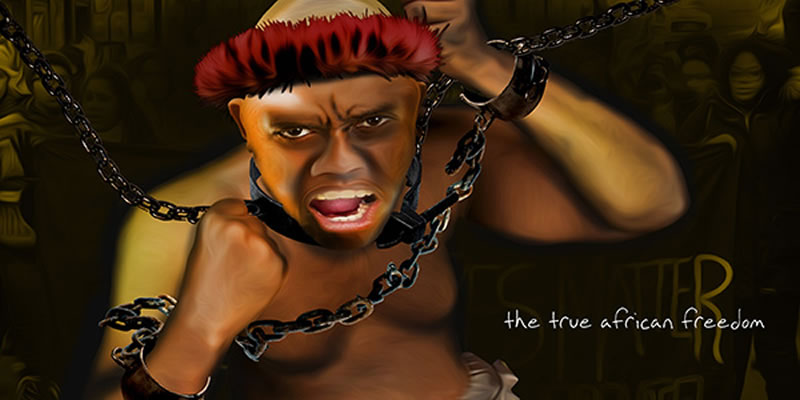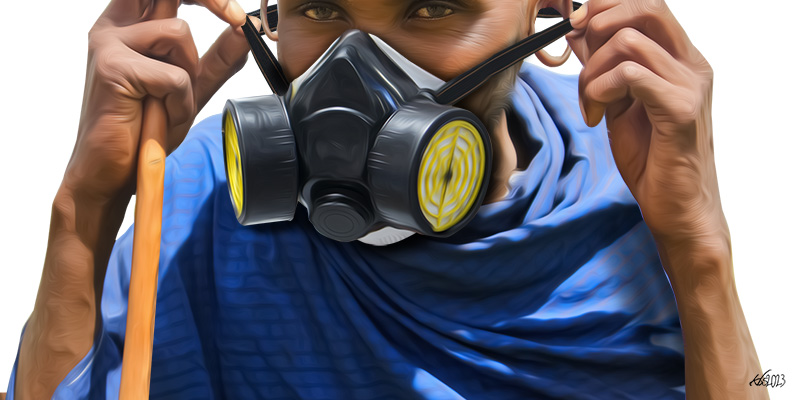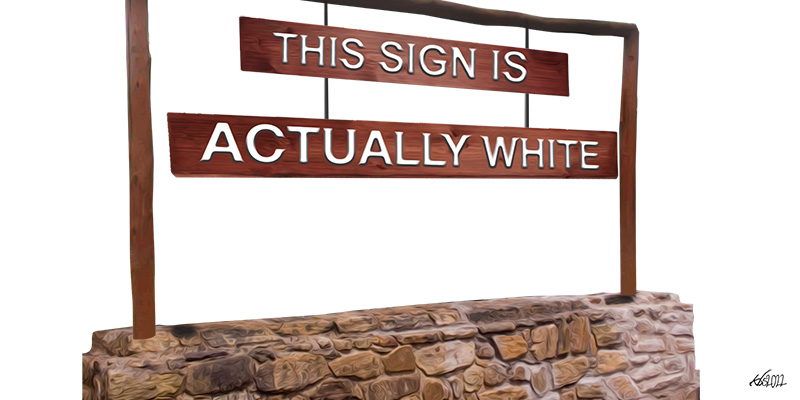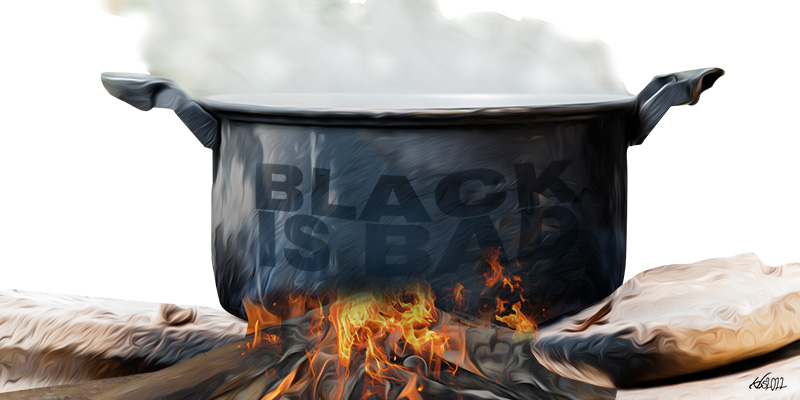Legacy Museum & National Memorial for Peace and Justice
Equal Justice Initiative
Multimedia: Montgomery, Alabama
Written on the body
Stage play: Andia Kisia
Heavy
Non-fiction, memoir: Kiese Laymon
Lusala
Film: Silas Miami, Wanjeri Gakuru, Oprah Oyugi. Story mentor: Mbithi Masya
The film Lusala (directed by Mugambi Nthiga) begins with a child being woken up by his drunk father, who forces him to dance as the father sings circumcision songs. The child, Lusala, dances grimly as his father sings and berates him for not knowing the song, and strikes the table menacingly with his bakora to keep the beat. The child cannot know the songs that are sung to make boys into men; he is still a boy. But the father sings his surly song and strikes the table again and again; the scene ends the way we know it will – with that bakora being used to strike the child’s body, a painful end to a painful song.
***
A few months ago, I visited the Legacy Museum and the National Memorial for Peace and Justice in Montgomery, Alabama. It was a beautiful spring day in March. The sun was shining and warm, the air was still. The sky seemed impossibly blue and perfect.
The museum and memorial are two separate but related sites – the former is an indoor museum located in a former warehouse that was used to hold enslaved people; it chronicles the harrowing story of black people in America from slavery, to racial terror, segregation and mass incarceration. The memorial, on an outdoor, six-acre site atop a hill overlooking downtown Montgomery, memorializes more than 4,400 black men, women and children that were shot, hung, burned alive, drowned by white mobs between 1877 and 1950.
We — me, and the friend I was with – began by walking through the museum. He is black, American, and grew up in Huntsville, Alabama, about 300km north of Montgomery. We looked at the notices for slave auctions and newspaper advertisements for the sale of human beings. We read the numerous humiliating laws that made blackness a stain on public spaces, and regulated the most mundane things in the Jim Crow Era, from beaches to billiard tables. We saw the soil that had been collected from sites where people had been lynched, displayed in jars on a shelf – red, brown, and black soil, Abel crying out for justice from the ground.
We got to the memorial, where a statue installation of a black family in chains designed by Kwame Akoto-Bamfo is the first thing that confronts you. It had begun to rust, rivulets of bloody-looking ferric oxide running off the statue. We walked through the 800 steel columns hanging from the roof, each representing a county where a lynching had taken place, the names of the lynched engraved on the columns. They were intended to simulate black bodies swinging in the southern breeze – as Billie Holiday would have put it – and by this time I was thankful that this was outdoors or I might not have been able to breathe. The sky was now like a blanket, bright and blue and suffocating. But I knew I had to hold myself back from tears or breaking down, for I was there with a black American from Alabama. If I was shattering inside, how much more painful would it be for him, looking at places and histories he knew much more intimately.

At the end of the day, after a dinner of shrimp and grits at a restaurant across the road from the museum, I went to bed at 7.30pm. I was exhausted, a different kind of fatigue, one that both comes from the bones and settles on them, and sleep is a small comfort for 400 years of historical and ongoing terror that has taken hold of the body.
The next morning, we went to visit his family in Huntsville, he joked that this little country town was surely nothing like Nairobi city, and I half-agreed – in my eyes it was far too sprawling and sparsely populated to be a city. We played Cornhole, a kind of beanbag tossing game, with his family – his mother, brother and grandparents – in their backyard as the sun went down, and my embarrassing lack of hand-eye coordination threatened to make my team lose badly.
***
Oppression is written on the body. Just like those three hours in Montgomery made me feel like I had run a marathon, every act of political exclusion, judicial injustice, and intentional impoverishment leaves its mark on the body. Some marks are visible, like Lusala’s as a child at the hands of his violent father. Some are invisible, like later in Lusala’s life when physical scars have healed, but the fear has found a permanent place to live in his mind, until he eventually has a mental breakdown. Even so, the line between his mental state and his body are not clear-cut: Lusala’s terrors live in his body, manifested in frequent bed-wetting. By the end of the film, one realizes that his experiences cannot simply be described as “hallucinations” – they are real, at least as real as the violence and trauma he has suffered in his life. And Brian Ogola, who plays Lusala as an adult, inhabits these tragedies with devastating clarity – even the most fleeting look on his face speaks to so much that cannot bear to be spoken aloud.
Andia Kisia’s stage play Written On The Body, a collection of vignettes uncovering Kenya’s national traumas from the colonial moment to the present day, then turns our attention to the way these terrors can live in a body politic, the brutalization of an entire nation. In this way, Lusala and Written On The Body are in conversation – and coincidentally (or not), both directed by Mugambi Nthiga – speaking to each other and both exploring, in their own particular ways, Francis Imbuga’s famous quote, “When the madness of an entire nation disturbs a solitary mind, it is not enough to say the man is mad.”
It is not enough to say that Lusala is mentally ill, that he has anxiety or paranoia or psychosis. He is, instead, the solitary mind that the madness of this entire nation has taken residence. Lusala is all of us – all our pain, trauma, and catastrophe – which Written On The Body forces us to look at ourselves, and trace the outlines of this collective brokenness.
Written On The Body tells us that Kenya is an on-going war zone, with bodies, minds and spirits of its people the daily casualties. Still, in Kisia’s subtle rendering, Kenyan-ness is something tart rather than bitter, a junction where bleak nihilism sometimes takes a turn into dark humour. In one memorable scene, Kisia places a pair of pathologists – they might be medical examiners or mortuary attendants – at City Mortuary in the days and nights following the attempted coup in 1982. Bodies are coming in faster than the two (exceptionally played by Elsaphan Njora and Charity Nyambura) can process them, and they devise a way to quickly figure out some identifying characteristics for these anonymous cadavers.
It goes exactly where you think it’s going, for we are a country where tribal stereotypes are an instant shorthand for reading bodies – this one is too dark to be a Kamba, and this one is too well-dressed to be a Kisii – but by the time the scene ends in a phallic joke, circumcision making its grim return, the audience’s laughter had turned into embarrassment, even shame – is this what we have become?
***
Like Written On The Body, Kiese Laymon’s memoir Heavy traces these same threads, of what happens to bodies when violence becomes the air we breathe. It is set in the Deep South, the place of strange fruit swinging in the southern breeze, whose painful story is ground zero for the memorial atop that hill in Montgomery.
Laymon, today a professor of creative writing at the University of Mississippi, tells the story of growing up in Jackson, Mississippi at the hands of a loving and complicated family, where love hurts and also heals, and it is difficult to see where one scar ends and the other begins.
But Laymon’s book goes further than I’ve seen a memoir go, especially one that inhabits and explores black masculinity. In the words of Chimamanda Ngozi Adichie, “We define masculinity in a very narrow way. Masculinity is a hard, small cage, and we put boys inside this cage. We teach boys to be afraid of fear, of weakness, of vulnerability. We teach them to mask their true selves, because they have to be, in Nigerian-speak—a hard man.”
Laymon is not a hard man. His vulnerability, his fear and weakness are real in Heavy, they are literally written on his body – the scars on his body from childhood beatings, in the stress eating, in the 300lbs (135kg) he carries on his body while still a teenager, in the starvation he forces himself to undergo until he faints from lack of food, in the obsessive running that shatters his joints. The body is the site, the agent and the victim.
Still, what we may call vices, addictions or traumas – sexual violence, gambling, alcohol and drug addictions, eating disorders, broken relationships – are, in Laymon’s telling, scenes of tenderness. And by this I mean that he renders the story of black existence tenderly, with sensitivity and kindness, and that the stories themselves are tender – they are raw, inflamed, bruised, still bleeding.
Ultimately, the story in Heavy is that life is complicated, that it is a combination of multiple entanglements “that are so interwoven that it is easier to discard the entire box of tangled threads than to spend the time untangling them,” as C. Leigh McInnis, author and instructor of English at Jackson State University, described Heavy in this review. “[Laymon] provides a process of healing by showing that the first thing that people must do is realize just how multifactorial their hellish lives are and, then, realize that those multifactorial elements can be separated and analyzed even if the process is laborious.”
And so, Laymon gives us a scalpel to do this necessary, heavy work, which, although is inevitably painful, it can at the very least be precise.
***
What can one do with the anguish of these truths? With the knowledge that one cannot escape one’s body, no matter how hard one tries? That the past will always find you, in fact it is never past – the present is, in fact, the past in present-time? With the knowledge that if you are caught on the underside of power, your body will become a site of the accumulation of various strikes, until the last chapter of any successful genocide, where the oppressor can remove their hands and say, “My god – what are these people doing to themselves? They’re killing each other.”
These are the questions that Lusala, Written on the Body, Heavy and the Legacy Museum & National Memorial for Peace and Justice are asking us to confront, in their own particular yet related ways. Together, they present blackness, black corporeality, black existence – both in Africa and in the African Diaspora – as a site of great struggle, with some victories, but the struggle is ubiquitous, it is continuous, it is cosmic, it is seemingly eternal.
Over the three months that I watched, read and experienced the four works cited in this essay, I also listened to theologian and writer J. Kameron Carter present blackness as something else – a site of true spirituality. In a podcast recorded at Fuller Theological Seminary, Carter presents blackness as a kind of spiritual practice, the forms of life together created at the bottom of slave ships where black bodies are forced to be in contact, in the fields where a “violent arithmetic” reduces them to items on a balance sheet. Yet it is these spaces that are the possibility for alternative practices of the sacred.
In Carter’s reading, blackness as practiced in community always open, always accommodating, there’s always room for one more at the table, and this is how black communities survive – before Dylan Roof shot and killed nine worshipers at Mother Emanuel AME Church in Charleston, South Carolina, they welcomed him to join them for bible study, and later he said that the warm welcome he received almost made him not go through with the shooting.
This openness makes black communities vulnerable to infiltration, sabotage and attack, but also, paradoxically, makes them impossible to eliminate completely, because they are always renewing themselves in community, together, even through the forced intimacies enforced upon black bodies. “It is a kind of sociality that presumes embrace, not protection,” says Carter, “If there’s any self-defence for blackness is that it keeps on loving, which is why it can’t be killed… which is, in some curious way, a kind of self-defence.”
In other words, the vulnerability and finitude of individual bodies (in Greek, soma), is transfigured in and through community into the messy, unbounded, resilience of the flesh (in Greek, sarx). Blackness is more like flesh than it is like body, as Carter sees it, where flesh is a mode of material life where we are composed in relationship to each other, like compost. “Compost is a number of things put together. You can’t say compost is this, and not that – compost is compositional, it is many things put together…Blackness is like flesh in that way, it is always in touch with everything else, it is unbordered and non-exclusionary.”
This, as painful as it is, is true spiritual practice – a possibility of life together that makes something beautiful from the rubble, from the disaster around us. I was thinking about this on that perfect day in March as I laughed and played Cornhole in the embrace of a family I had just met in Alabama, until my wrist, in fact, my body, gave out.








